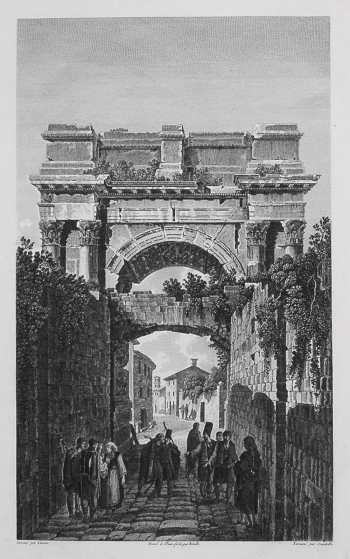VIEW OF THE GOLDEN GATE IN PULA
The veduta shows the paved street of Pula with the Golden Gate, also known as the Arch of the Sergii, in the foreground. Cassas’ veduta of Peristyle (inv. no. 472) from 1802, or the vestibule of the Temple of Diocletian (inv. no. 578) is from the same series. Cassas, with his collaborator Joseph Lavallee, made copper-plate watercolour drawings that Cassas himself collected during his travels in the eastern Mediterranean and the Adriatic in 1782. Based on these records, his handbook on the ancient monuments and architecture of the Voyage Pittoresque et Historique de l'Istrie et de la Dalmatie was published in Paris. The graphic was engraved on the copper plate by Jean-Baptiste Réville, which is written below the bottom edge of the map, and it was drawn by Cassas and co-authored by Croutelle. In addition to the architecture of the city and the botanical elements visible on the walls of the Arch, Cassas, as usual, captured the daily activities of local residents in the narrow street and their traditional clothing. In part, this clothing is even of the oriental (Morlac) provenance, that is, as the author himself states in the text section, the costumes of Istria and Dalmatia are combined in this account.

